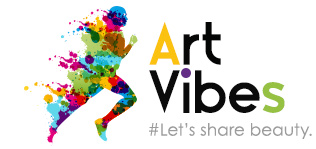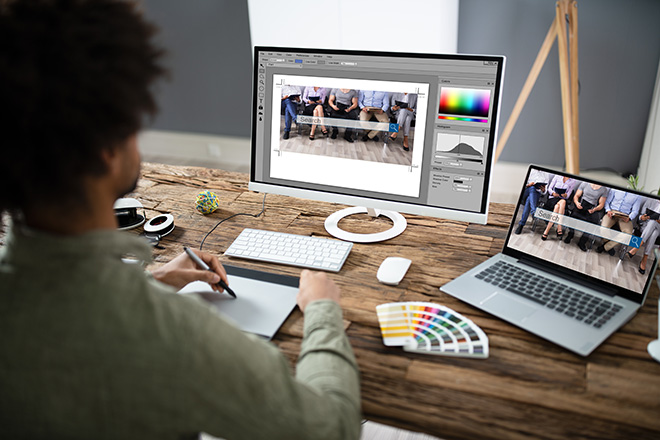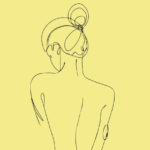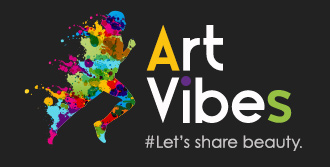Advanced Photo Editing Techniques for Professionals
Redazione Art-Vibes | On 19, Lug 2024
Unlock your imagination and turn ordinary images into stunning visual masterpieces.
di Redazione Art Vibes
– Picture: image via: Adobe Stock.
Advanced photo editing lets you create creative and artistic effects by mixing and changing the various elements in an image. It offers endless possibilities for unlocking your imagination and turning ordinary images into stunning visual masterpieces. Photographers often outsource image editing to specialized professionals or companies for various reasons.
Introduction of advanced photo editing
Importance:
The mainly purpose of editing is that it is used to enhance the beauty of photo through your editing skills. Editing photos may have some basic things like cropping, resizing, and using artistic filtering. Also, advanced editing techniques are retouching, removing unnecessary elements and distracting.
Tools of the trade
Professional photographers mostly use Adobe Photoshop for editing. Adobe Photoshop and Lightroom are used at the industry level and they also have many tools for precise editing.
Utilizing an AI image background remover can save both time and effort, providing a quick and efficient solution for removing unwanted backgrounds without compromising on quality. This tool is especially useful for photographers looking to streamline their workflow, allowing them to focus more on creative adjustments rather than manual background removal. The AI technology ensures precision, delivering professional results in a fraction of the time compared to traditional methods.
Mastering color correction
Understanding color theory
Color Theory Essentials for Photographers. Color theory is the art of creating pleasing combinations of colors known as color harmonies that evoke the desired mood or accurately express what you want to say with your art. Visual artists take the help of a color wheel to choose the right colors for their artwork.
Using curves and levels
Curves and level adjustments are used for the color and exposure of the image also improve the image looks. The and darkening (burning) areas, you can add depth and dimension, making the subject stand out more prominently.
Advanced healing and cloning
Healing and cloning are types of tools that are used to remove imperfections. For advanced editing techniques you can use the patch tool, content-aware fill, and the clone stamp is used to correct flaws while maintaining the integrity of the surrounding areas.
Curves tool is mostly used for precise control of all of their range. Levels help in adjusting shadows, mid-tones, and highlights. Mastering these tools can dramatically improve the color balance and depth of an image.
White balance adjustment
Correcting the white balance ensures that colors appear natural. And then, this can be done manually in photo editing software. Adjusting the white balance is particularly important in photos with mixed lighting conditions.
Advanced retouching techniques
Frequency separation
Frequency separation is a technique used to separate an image into high and low -frequency layers. The skin retouching allows for addressing texture and color separately. It’s particularly useful for portrait photography, providing a polished yet natural look.
Dodge and burn
Dodge and Burn is a method to enhance the highlights and shadows of an image. By selectively lightening (dodging) and darkening (burning) areas, you can add depth and dimension, making the subject stand out more prominently.
Creative enhancements
Adding textures and overlays
The incorporation of textures and overlays is mostly used to create flair for your images. And then textures are also used to create a vintage effect, while overlays like light leaks enhance the visual interest. These elements should be blended carefully using layer masks and blending modes.
Creating composite images
Making of composite is used for combining multiple photos to create a single. This technique is commonly used in commercial and memorial photography. The key skills included in it are masking, layering, and perspective matching to msed to apply adjustments to specific parts of an image. By painting on the mask, you can also control the painting effect, by doing this you can also normalize the image. This technique is essential color correction and exposure adjustments.
Adjustment layers
Adjustment layers are used to apply color and tonal adjustments non-destructively. Each adjustment layer can be edited independently, and masks can be added to control where the adjustment is applied. This flexibility is invaluable for fine-tuning edits.
Enhancing portraits
Skin smoothing technique
Make the final image look realistic and seamless.
Advanced sharpening techniques
Standard sharpening methods can sometimes result in an unnatural look. These techniques that are used to like high pass filtering and the use of smart sharpening in Photoshop have more control and can produce healthy results. Then, sharpening has to be applied selectively to maintain a natural appearance.
Working with layers and masks
destructive editing
Non destructive editing is used to change it without changing the original image and its features. And then, by using layers and masks in Photoshop you can make an experiment and adjust edits without permanent consequences.
Layer masks
Smooth Skin in Photoshop Express on mobile has a quick fix to remove undulations and soften skin. Even out skin tone and texture while retaining a natural look using Photoshop Express on mobile. Apply Smooth Skin Quick Action on a close-up shot portrait to touch up light makeup smudges by moving a slider.
Enhancing eyes and teeth
The eyes and teeth are focal points in portrait photography. Techniques for enhancing eyes include sharpening, brightening, and adding catchlights. Teeth can be whitened and brightened using selective color adjustments. Care should be taken to maintain a natural appearance.
Hair retouching
Depending on how quickly your hair grows and how much your dyed color contrasts with your natural color, this is usually done every four to six weeks. A hair color touch-up guarantees that the dyed hair and your roots merge in unison, keeping your hair’s color consistent from root to tip.
Landscape and nature photography
Advanced HDR techniques
High Dynamic Range (HDR) photography captures a greater range of light and shadow than a single exposure. Advanced HDR techniques involve blending multiple exposures to create a balanced image. Software like Photomatix or Lightroom can be used for this process.
Panorama stitching
A segmented panorama or high-resolution image can be created by stitching together numerous photographic images with overlapping fields of view, a technique known as image stitching or photo stitching.
Focus stacking
Focus stacking is a Photoshop method where you layer and combine multiple photos, each with a different focal point. Photoshop enables you to generate an entirely sharp image by highlighting the focal areas in each image.
Special effects and filters
Applying creative filters
Creative filters are used to change the mood and look of a photo. This includes black-and-white conversion classic looks, as well as cinematic Color Grading. Filters can also be applied worldwide, with masks allowing for more precise, targeted application.
Motion blur effects
Motion blurs are used to convey an impression of motion and energy. The effect can be incorporated into post-processing with tools like Path Blur and Radial Blur in Photoshop. If used with care motion blur can add to the story the image.
Light effects and flares
By adding flares and light effects, you can improve the mood and authenticity of photos. This is done with tools such as Lens Flare, Lens Flare filter, or applying light effects manually using soft brushes. The effects should be applied slowly so that they don’t overwhelm the principal object.
Workflow optimization
Presets and actions
Utilizing presets and actions can dramatically speed up your workflow. Presets are presets that have pre-defined settings for regular adjustments, and actions are a sequence of actions that can be automated. Both can make life easier and warrant consistency across a collection of photos.
Batch processing
Batch processing permits the editing of many photos simultaneously. This is especially beneficial when shooting large-scale photo shoots or occasions when similar adjustments are required across multiple images. Software such as Lightroom does exceptionally well in this field.
File management and organization
A well-organized file management system is essential for a smooth flow of work. This means organizing photos in catalogs together with metadata that facilitates searching, and ensuring that you back up the files frequently. Tools such as Adobe Bridge and Lightroom offer comprehensive features for organizing.
Conclusion:
The art of mastering advanced photo editing techniques requires patience, practice, and the willingness to try new things. By enhancing your knowledge in editing, color correction creative enhancements, and workflow optimization, you will be able to improve images to higher levels. Keep in mind that the purpose of editing isn’t to cover up imperfections, but rather to increase the beauty and narrative potential of your photographs.



































Submit a Comment